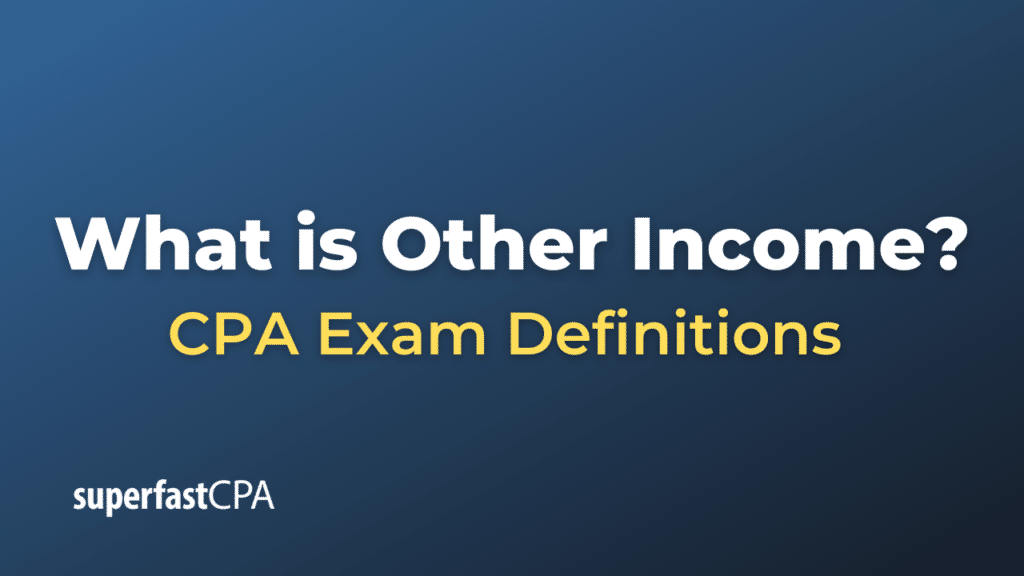Other Income
Other income, in the context of financial accounting, refers to the revenue generated from non-core business activities. These are activities not directly tied to a company’s main business operations.
While a company’s primary income is derived from its main business activities, such as selling goods or providing services, other income is derived from secondary activities which are not the main line of business. This income is listed separately in the company’s income statement so that it does not artificially inflate the primary income generated from the main business activities.
Examples of other income might include:
- Interest earned on investments or bank deposits.
- Rental income from a property the company owns.
- Profit from the sale of a company asset, like a vehicle or property (often referred to as a gain).
- Dividend income from investments in other companies.
- Foreign exchange gain.
- Insurance settlements.
These sources of income are not derived from the primary business activities and therefore are categorized under “Other Income” in financial statements.
Example of Other Income
Let’s consider an example with a hypothetical company called “Techtron Inc.” which is primarily engaged in the manufacturing and selling of electronic gadgets.
Their income statement for the year ending 2023 might look something like this:
| Techtron Inc. |
|---|
| Income Statement |
| For the Year Ended December 31, 2023 |
| Income | Amount (in USD) |
|---|---|
| Sales Revenue | $5,000,000 |
| Cost of Goods Sold | $3,000,000 |
| Gross Profit | $2,000,000 |
| Operating Expenses | $1,000,000 |
| Operating Income (Profit) | $1,000,000 |
| Other Income | |
| Interest Income | $20,000 |
| Gain from Sale of Old Machinery | $30,000 |
| Total Other Income | $50,000 |
| Net Income Before Taxes | $1,050,000 |
| Taxes | $210,000 |
| Net Income | $840,000 |
In this example, Techtron Inc.’s primary business activities generated a profit (Operating Income) of $1,000,000. Additionally, they earned $50,000 in Other Income, which included $20,000 in interest income from investments and a $30,000 gain from selling old machinery.
This Other Income is separate from the income generated by their core business operations. After accounting for this additional income, their Net Income Before Taxes becomes $1,050,000. After deducting taxes, their Net Income for the year is $840,000.













